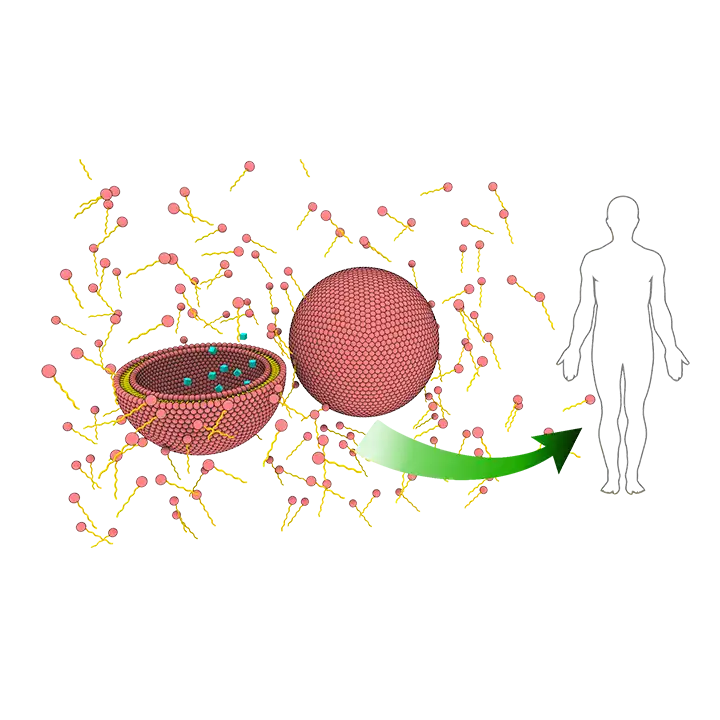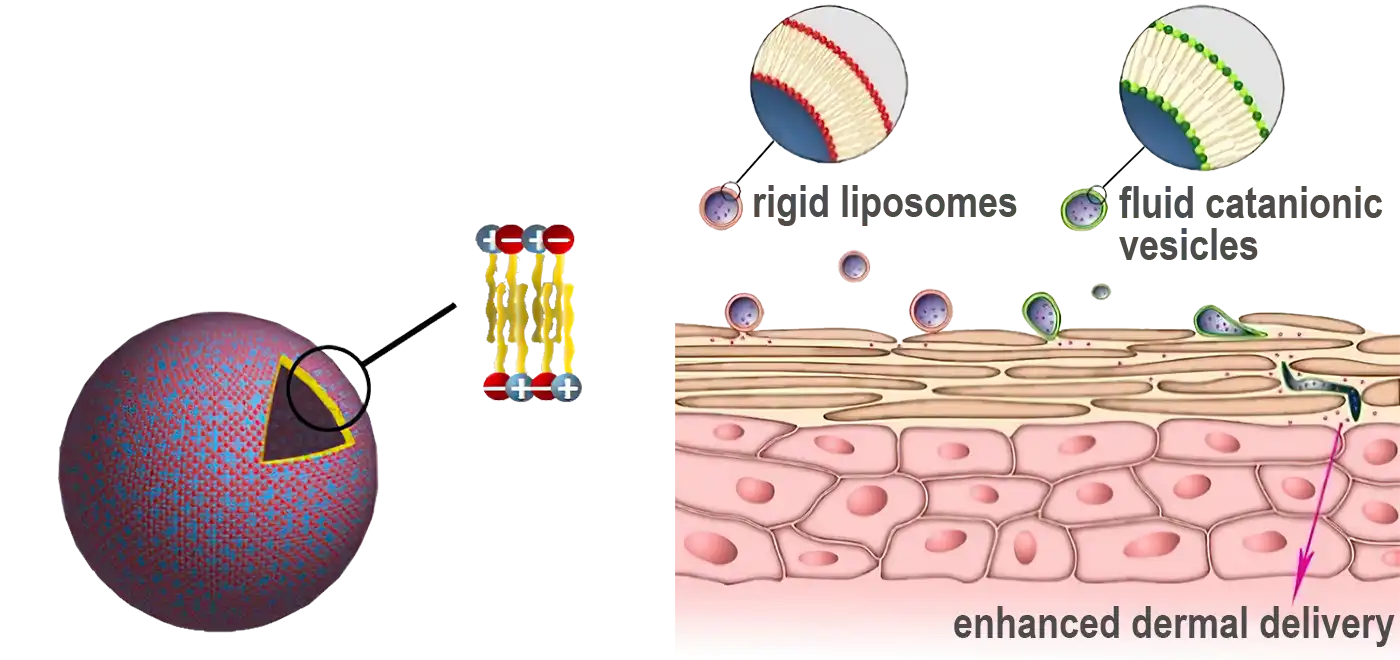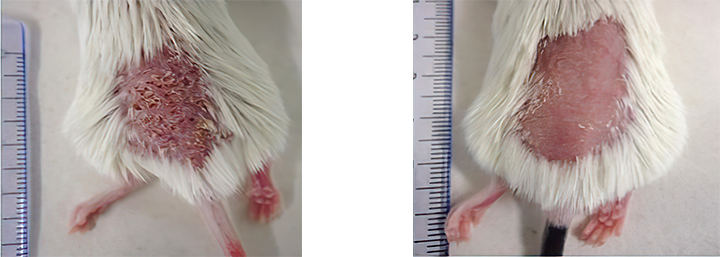
Bioinspired and/or biosourced vectorisation systems
We synthesize amphiphiles and surfactants from biosourced building blocks (sugars, amino acids, nucleic bases, natural fatty acids, etc.) based on the principles of green chemistry. These compounds self-assemble into various organised molecular systems (micelles, catanionic vesicles, organogels, hexosomes, nano- and microemulsions, etc.) that we characterise by complementary physico-chemical techniques: scattering experiments, electron and optical microscopy techniques, interface analyses, rheology, etc. Combined with targeting ligands and/or with active substances to be delivered, these systems are then used as bioinspired vesicular or lipid vectors on the model of natural biological systems. The interactions of these vectors with biological systems are also studied with applications in the targeted delivery of active ingredients, for example for the topical treatment of skin conditions, the targeting of the central nervous system, transfection, the treatment of digestive diseases, the regulation of circulating peptides.
As an example, by modulating the physico-chemical properties of the membranes of catanionic vesicles, we have shown that it is possible to significantly improve the penetration and cutaneous retention of an active ingredient when it is encapsulated in vesicles with fluid membranes. This discovery allowed us to develop an effective bioactive formulation for the treatment of psoriasis.
This work is the result of a collaboration with the LCC and Infinity laboratories and has led to a patent which is now under licence.

Catanionic vesicle and its diffusion through the skin

Mice with psoriasis treated by dermal application of catanionic vesicles loaded with an anti-inflammatory drug

Internalisation of organogel nanoparticles in Caco-2 cell culture
We also develop colloidal dispersions containing organogel nanoparticles or gelosomes. These vectors based on vegetable oils and natural gelling agents are particularly suitable for oral delivery of hydrophobic active substances thanks to the fast internalization of these vectors by Caco-2 cells, predictive of intestinal absorption.



